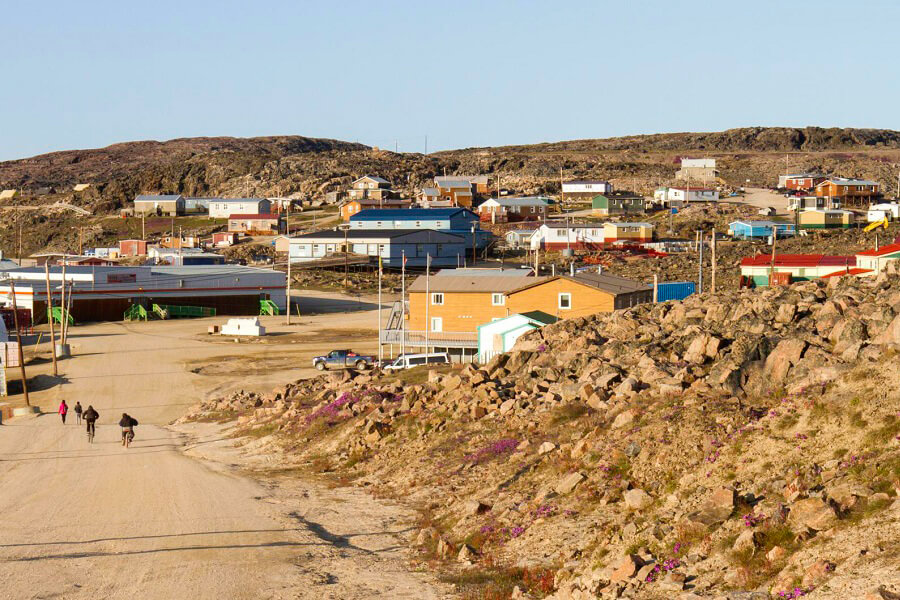
Responding to COVID 19—Indigenous communities can’t be expected to do more with less
When Canada’s rural and remote Indigenous communities face emergencies, they often lack the resources and supports common to most Canadian towns and cities. But despite being at a comparative disadvantage, these communities generally manage to respond. They do this by using their strengths—by relying on informal practices, traditional knowledge, local skills, and on each other.
It is remarkable what First Nation, Inuit, and Métis communities can do with little to work with. Many communities are again looking to their strengths and ingenuity, as they face the threat of COVID-19. But should we be expecting these communities to do more with less? Does this produce optimal outcomes?
Strength-based community resilience
There are many examples of Indigenous communities using their strengths to address emergencies. To ensure fire prevention, communities often look to their own members to undertake annual “FireSmart” activities—practices that reduce exposure to fires. They also use the traditional knowledge and land-based skills of local Elders, hunters, and Rangers[1] for search-and-rescue capacity and to deal with natural disasters.
Indigenous communities are currently relying on their adaptive capacity as they confront COVID-19. In Canada’s far North, the Kitikmeot and Kivalliq Inuit associations are providing support to Inuit who wish to go out on the land as a social distancing measure, and for traditional activities that bolster food security. First Nation communities are looking to their isolation and jurisdictional authority as unique strengths. The Haida Nation, for instance, put in measures that cut off non-resident travel to their communities on the islands of Haida Gwaii as far back as mid-March. And Siksika Nation in Alberta created a mobile response unit to respond to COVID-19. The unit goes directly to the homes of community members to test for the virus and to provide food hampers to vulnerable citizens and Elders.
But is local-level resilience enough?
Even though the resilience, adaptive capacity and strengths of Indigenous communities help them find ways to respond to emergencies, outcomes are often not what we would tolerate for other communities. The ability of remote communities to overcome a lack of resources and vulnerabilities can only go so far. If a community does not have a fire truck, it will rally to respond to a house fire—but with the main objective of saving residents. The house may be left to burn. A lack of technical expertise, skills, and infrastructure—including high-speed internet services that can significantly enhance communications during a crisis—presents many challenges in preparing for and responding to emergencies.
These resource and capacity constraints are relevant to COVID-19 responses as well. Inadequate medical infrastructure, equipment, and personnel are often the norm for many remote communities. They may also rely on air travel to get medical practitioners and resources into communities, and transport critical care patients to hospitals. When conditions make air travel difficult, patients can be especially vulnerable.
Many communities are looking to develop—and some already have—pandemic plans. But their effectiveness is not yet clear. In the end, basic needs and day-to-day issues are prioritized over long-term planning. Even with good plans in place, immediate needs, combined with a lack of resources and personnel, make implementation especially challenging.
What is needed?
Federal, provincial/territorial, and regional governments are key to enabling Indigenous community resilience. These organizations have put in place some measures to support communities as they confront emergencies, including initiatives that encourage the development (or updating) of emergency and pandemic plans. For its part, Federal Budget 2019 secured $211 million to increase resilience and emergency management capacity for on-reserve First Nations, with roughly $80 million directed toward health-related preparedness.
In response to the pandemic, Indigenous Services Canada allocated $100 million for Indigenous community public health, as well as $305 million through the Indigenous Community Support Fund (ICSF). The ICSF rightly notes that “communities are incredibly resilient and full of solutions and innovative ideas.” Accordingly, the fund “must support distinctions-based measures… and provide them with the flexibility they need to address the specific needs identified by communities and their members.” Empowering communities and leveraging their strengths, local knowledge, and expertise is a smart approach.
But these communities need more support, resources, and capacity to manage emergencies. In the case of COVID-19, this means effective coordination on the part of governments and partners during the immediate response. It means a rapid delivery of critical supplies to help communities address key vulnerabilities and basic needs shortages. It means access to life-saving medical equipment, practitioners, and infrastructure. Over the longer term, it includes the means to engage in risk assessments and comprehensive, long-term planning and capacity development. This, in turn, involves targeted skills development and training at the local level. And all of this requires meaningful, sustained investments.
[1]The Rangers are a part of the Canadian Armed Forces Reserves—they are typically Indigenous and located within remote communities, providing locally based emergency response capacity.

